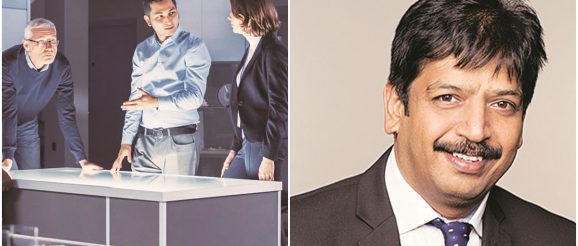India no longer just a low cost centre but main innovation hub: Chandra Reddy, head of engineering and R&D – India, Capgemini

By Srinath Srinivasan
IT services companies are increasingly reporting a higher share of revenue from digital practices. With Covid-19 accelerating digital adoption, digital has effectively cut across major core engineering verticals—manufacturing, automotive, wireless technology, logistics and many more. According to a recent Zinnov report, engineering, research & development (ER&D) spending at an overall level has been resilient and grew by 3% year-on-year despite Covid-19. It also estimated global ER&D spending to touch $2.1 trillion by 2024 at a CAGR of 9%.
Globally, this huge opportunity has attracted IT services brands to capitalise on manufacturing, hi-tech, communications and many such verticals. With Indian companies servicing this digital transformation and local talent forming a formidable workforce in the IT brands, players such as Capgemini are setting up ER&D centres in Bengaluru, Mumbai, Coimbatore among other locations. “ER&D contributes around 30% of Capgemini’s overall revenue share. We have close to 52,000 engineers and scientists in ER&D division and 40% of them are in India out of Capgemini India’s 1,50,000 workforce in the country. They serve 350 global clients. India is no longer just a low cost centre but the main innovation hub,” says Chandra Reddy, head of engineering and R&D, India, Capgemini.
These engineers address engineering verticals such as aeronautics, automotive, communications, energy utilities, industrial & consumer, life sciences, railway, infrastructure & transportation, semiconductor & electronics, software & internet, etc. The ER&D division has 125 software frameworks that can be licensed and are developed by the Indian engineers working in the technology centres across India.
“This frameworks reduce the time taken for customers to develop their solution and take it to market. We have a 5G centre of excellence in Mumbai. This lab is meant for creating solutions for small industries,” says Reddy. In addition, it has been working on electric vehicles. Chip and sensor level work on these vehicles are carried out by these centres. “We have achieved drive-by-wire currently and eventually aim to achieve autonomous driving in tandem with 5G technology. We are also looking at developing components abstracted from our solutions that our customers can use to reduce their time to market,” he says.
Indian engineers contribute to aeronautics in areas such as improving program efficiency, cost reduction and advanced aviation. While these are focused on industry verticals, the work also touches on technologies that cut across various industries horizontally. “We work on advanced five nanometer semiconductor technology, complete systems on chip technologies. These are widely used by several industries alike,” he says.
During the pandemic, the ER&D sector saw a surge in demand for digital transformation and this has benefited Capgemini. “Aerospace, automotive and energy industries were really impacted by Covid but still these industries moved forward with tech disruptions and investments,” says Reddy. On the healthcare front, the ER&D division has been working on providing rapid connectivity to medical systems. “We have been working with global clients. Our engineers here provided IoT based solutions to get data from medical sensors from patients’ bodies to the cloud which could then be analysed for treatment,” he adds. Apart from the quick response Covid care solution, it has been working on a blood management solution which is also IoT based. In addition to these, there has been focus on robotic surgery. “We work on joint solutions to enable knee and hip surgery. This involved cloud, IoT and robotic talent from our engineers here,” says Reddy.
According to him, attraction and retention of talent is the top priority today. It has signed MoUs with Indian academic institutions focusing on 14 skill-sets to ensure steady supply of fresh talent. “Semiconductor, VLSI, product line management and many other skills will be addressed via these MoUs,” says Reddy.
